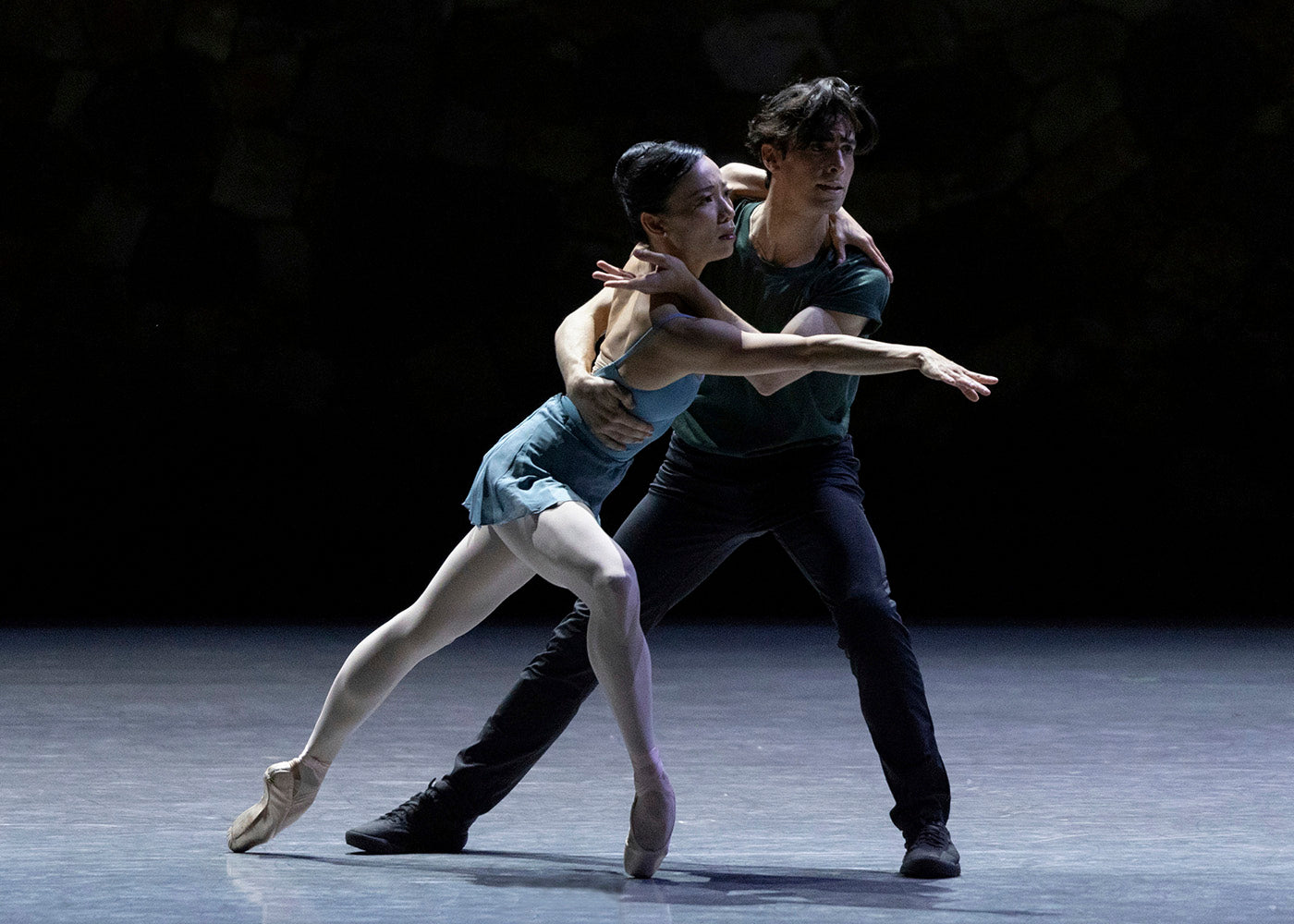Earthly Delights
Bex Anson and Dav Bernard, aka Mhz, talk about their brand new piece, “Ruins.”
FREE ARTICLE
World-class review of ballet and dance.
Bex Anson and Dav Bernard, aka Mhz, talk about their brand new piece, “Ruins.”
FREE ARTICLEThe name of Leonardo Sandoval and Gregory Richardson’s group, Music from the Sole, is an obvious allusion to the fact that the motor behind their performances is rhythm, and that this rhythm is often produced by the soles of the feet, in the form of tap.
Continue ReadingBodytraffic returned to Penn Live Arts at Annenberg during last weekend’s snowstorm to perform the world premiere of Philadelphia-based choreographer Matthew Neenan’s latest work, “I Forgot the Start.”
FREE ARTICLEIf Simone Biles, Baryshnikov, Michelle Kwan, Mr. Wiggles, and Bruce Lee somehow had a baby, that child would be an ideal candidate for the Compagnie Hervé Koubi.
Continue ReadingFrance-based Compagnie Hervé Koubi returned to the Joyce after four years to perform its latest evening-length work, “Sol Invictus.”
FREE ARTICLEDressed in hot pink ruffles and five-inch heels, a tiara perched on his shaved head, Arthur Aviles entered the stage as Maéva, a “Latino ghetto matriarch,” who launched into rapid fire Spanglish as a welcome to the Abrons Art Center audience for “Naked Vanguard: Works.”
Continue ReadingÉpoustouflant! Indeed, breathtaking is the word for Diavolo|Architecture in Motion’s world premiere, “Existencia,” the 70-minute commissioned work seen at the Soraya for two performances in mid-January.
Continue ReadingWorks & Process has been part of the New York dance ecosystem for 35 years—championing performing artists and supporting their creative process from studio to stage and beyond.
FREE ARTICLEHow does a gifted choreographer become an artist? I thought about this question a lot after seeing “Blooming Flowers and the Full Moon,” former ODC/Dance member Natasha Adorlee’s first full-length piece.
Continue ReadingDays away from presenting and performing in her own company’s first full-length ballet, Alina Cojocaru is at the height of her powers. And what powers they are.
Continue Reading“There will be blood,” says Jacques Heim, founder and creative director behind Diavolo|Architecture in Motion, the hyperphysical dance company he began in 1992. But he wasn’t referring to the Daniel Day-Lewis saga directed by P.T. Anderson, but rather to his latest opus, “Existencia,” which has its world premiere at the Younes and Soraya Nazarian Center for the Performing Arts (the Soraya), January 17 and 19, and involves an extreme, risk-taking movement vocabulary.
FREE ARTICLESome stories take hold of you and just will not let go. The film Call Me Dancer tells such a story—the true-life story of Manish Chauhan, a Mumbai street dancer, who nurtures the dream of becoming a ballet professional against daunting odds.
Continue ReadingWatching Matthew Bourne's reworked version of the “star-cross'd lovers,” I was briefly reminded of Veronica, played by Winona Ryder, in the dark 1988 comedy by Daniel Waters and Michael Lehmann, Heathers, and her line, “my teen angst bullshit has a body count.” Yes, this is the darker side of Bourne's repertoire,...
Continue ReadingThe choreographer Alexei Ratmansky reflects on the war in Ukraine, the connection between geopolitics and ballet, and joining the house of Balanchine.
Continue Reading
Beneath blue California skies, manicured trees, and the occasional hum of an overhead airplane, Tamara Rojo took the Frost Amphitheater stage at Stanford University to introduce herself as the new artistic director of San Francisco Ballet.
Continue ReadingAfter a week of the well-balanced meal that is “Jewels”—the nutritive, potentially tedious, leafy greens of “Emeralds,” the gamy, carnivorous “Rubies,” and the decadent, shiny white mountains of meringue in “Diamonds”—the New York City Ballet continued its 75th Anniversary All-Balanchine Fall Season with rather more dyspeptic fare.
Continue ReadingAn “Ajiaco” is a type of soup common to Colombia, Cuba, and Peru that combines a variety of different vegetables, spices, and meats.
Continue Reading